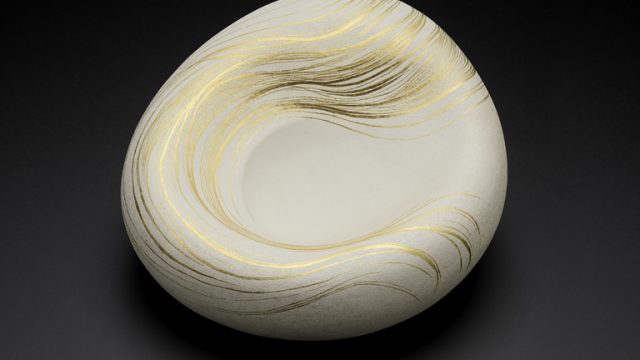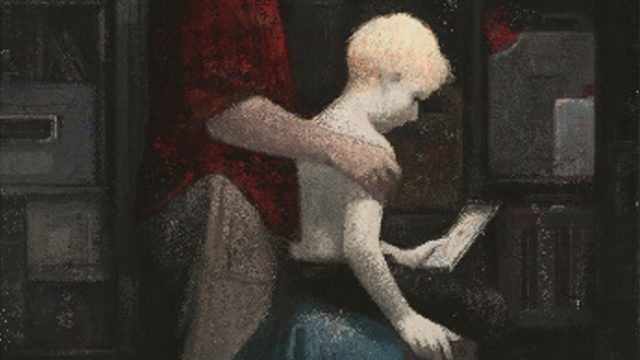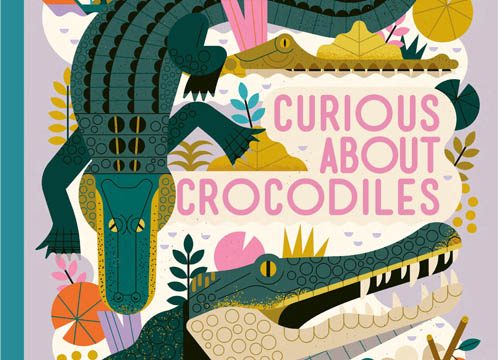The V&A’s collections offer amazing opportunities for school students to develop research and drawing skills. Here’s a recent article I wrote for AD Magazine (Spring 2017, Issue 18, published by the National Society for Education in Art and Design (NSEAD), that tells you more…
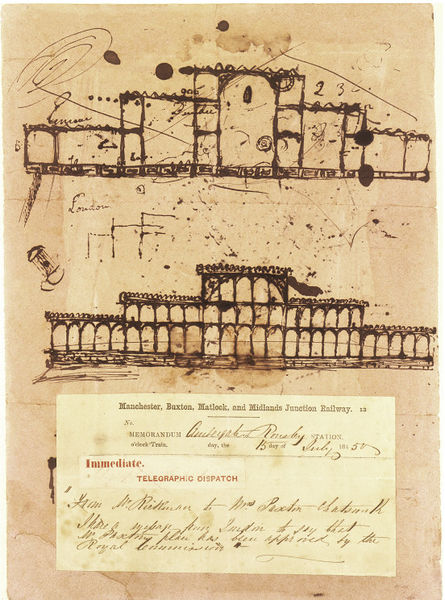
A sketch by Sir Joseph Paxton of the structure that housed the Great Exhibition of 1851 – a simple but beautiful line drawing, complete with ink blotches and scribbles – was the kernel of a grand vision. It shows Paxton’s initial concept for the Crystal Palace, which he drew as he sat in a board meeting for Midland Railway in Derby on 11 June 1850.
Not long after this meeting his design came to fruition, its grandeur captured by many artists of the day. It stood in Hyde Park for six months and was then disassembled, pane by pane, to be rebuilt in an area of South East London, later to become known as Crystal Palace in honour of the edifice. The visual expression contained within Paxton’s sketch, which was then worked up into complex technical drawings by a team of draughtsmen, communicates clearly and efficiently the overall concept for the building. It wouldn’t have taken long, probably a matter of minutes, but it manages to convey his idea perfectly.
Another example is architect Richard Buckminster Fuller’s sketch for a geodesic dome, which takes the expression ‘on the back of an envelope’ quite literally. With his dynamic pen strokes and choice of paper, you can imagine him grabbing for the nearest thing in order to quickly visualise his thoughts.
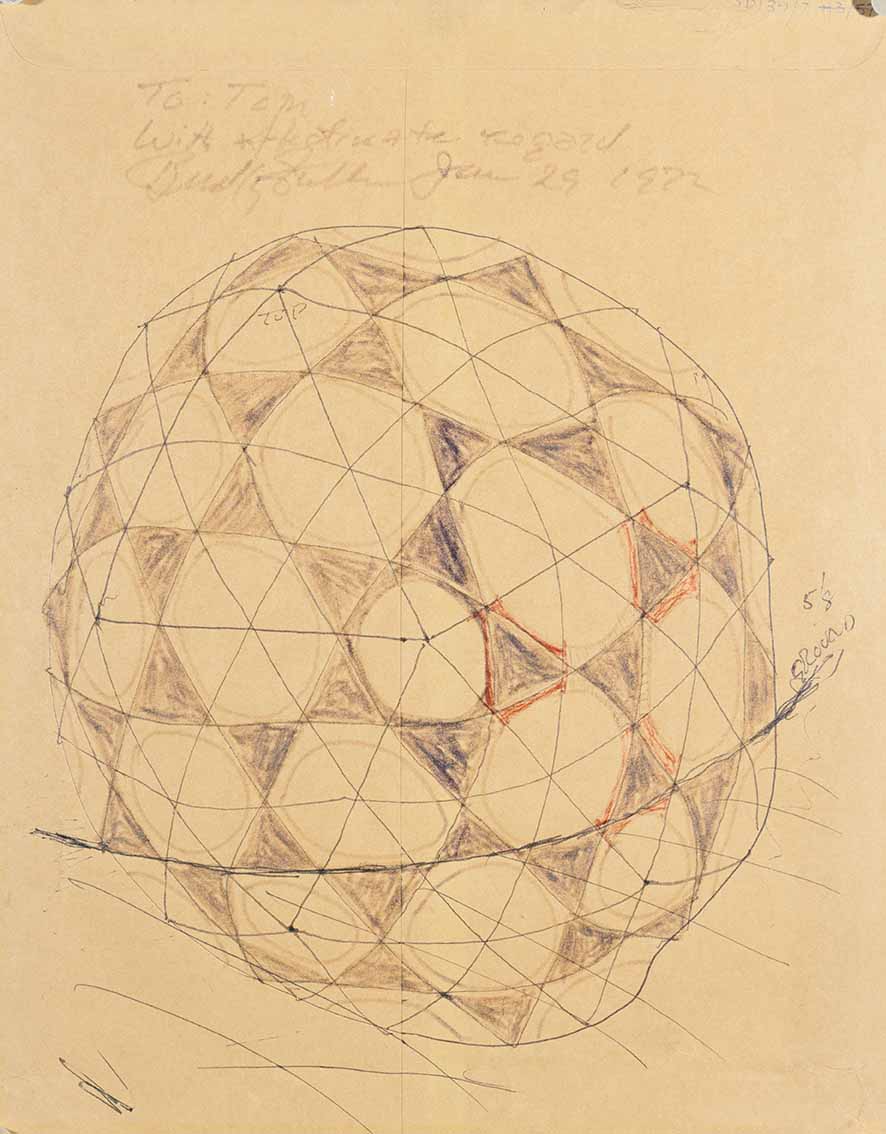
One might normally associate plans for architecture and engineering with the technical end of the drawing spectrum. However, in the V&A’s recent exhibition about the work of the world-renowned engineer Ove Arup, we saw how one of his favourite pastimes was to doodle. They are incredibly colourful doodles that may have been done for the pure pleasure of putting pencil to paper. However, they also express a happiness and a freedom that no doubt fed his creative and generous-spirited engineering ideas.
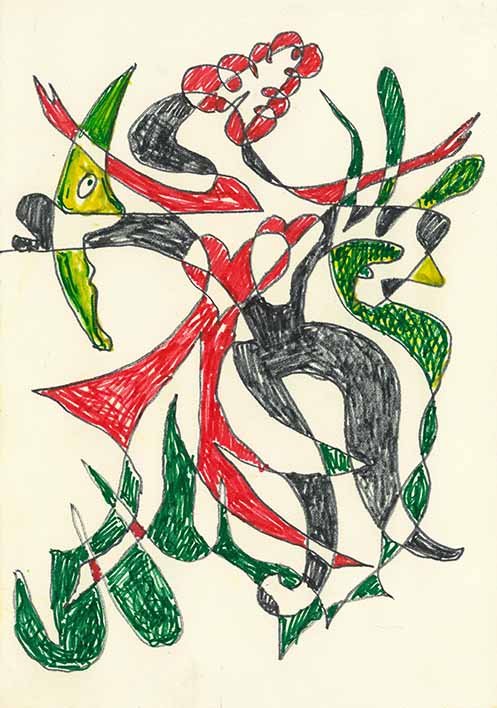
This way of sketching doesn’t necessarily come naturally to everyone. It is a skill that needs to be developed. It also requires a level of confidence, something I’m sure Paxton, Buckminster Fuller and Arup had in bucket loads. As Paula Scher, graphic designer and the first female partner at renowned design studio Pentagram, once said: ‘It took me a few seconds to draw it, but it took me 34 years to learn how to draw it in a few seconds.’ (Logo Design Love: A Guide to Creating Iconic Brand Identities, second edition, David Airey, 2009, Peachpit Press)
Alan Fletcher, co-founder of Pentagram and designer of the V&A’s logo, said that ‘thinking is drawing in your head’. (The Art of Looking Sideways, Alan Fletcher, Phaidon Press, 2001) This idiom, from his book The Art of Looking Sideways, captures the power of original thought and expression, linking the metaphysical to the visual. Through this, Fletcher is revealing the possibilities of imagination becoming reality. If you reverse his phrase, you could say drawing is thinking on a page. Essentially, that is what we are asking students to do with their sketchbooks. Map their thought processes. It is an individual record of conscious and subconscious thoughts, and decision-making. It can be a combination of annotation, text and visual representation.
For students, the notion of drawing in sketchbooks and researching from objects is something that comes up time and time again as an area in which they need particular support. Rather than jump straight to the final artwork or design, how do we encourage students to slow things down and critically evaluate and record what they are doing to get there?
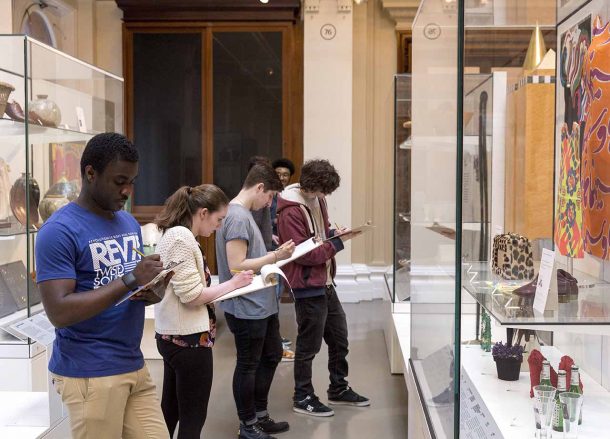
Taking the aforementioned sketches from the V&A and RIBA collections as inspiration, in what ways can we as educators help develop a similar process of ideas generation and communication through drawing with children and young people? How can we promote experimentation though visual language and expression? We need to ensure that we allow time within a child’s education for this kind of creativity and, in turn, guarantee that the next generation has the chance to develop this very powerful communication tool. Drawing speaks to others, it is a record of our expression, it connects ideas. Time nurturing this skill is time well spent.
We often hear about the worry that the digital might subsume the physical in terms of research and creation and, even worse, that it might make us creatively lazy. One could easily say that Instagram or Pinterest are replacing the need for physical sketchbooks. After all, in the way that a sketchbook is an amalgam of things that pique our interest, things we can return to for future inspiration, so too are the rolling streams of images we create online. They are the modern day scrapbook. My view, however, is that these online examples can complement the physical. Their existence can free up space for original thought on paper.
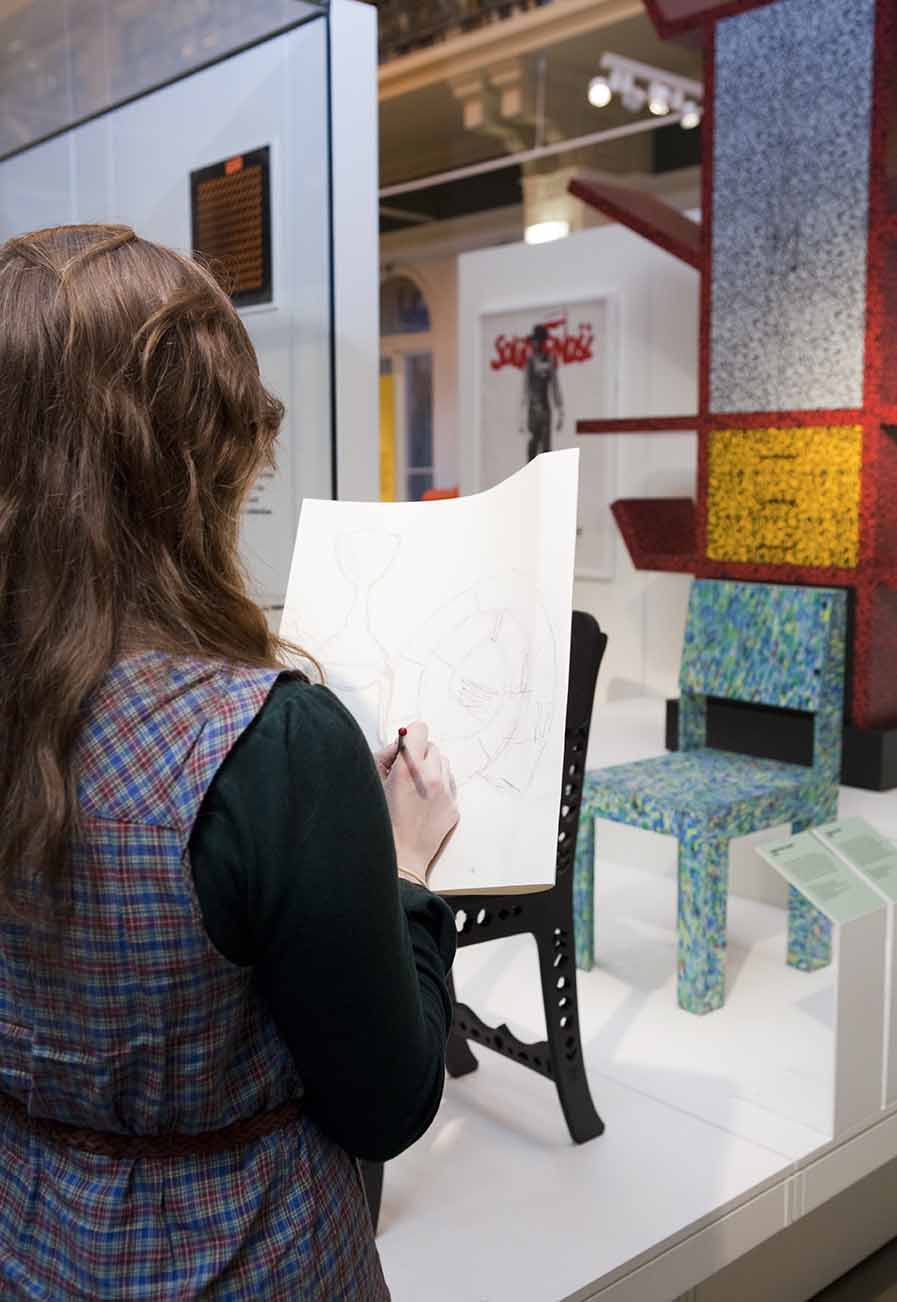
Art and design teaching has a long-held tradition of observational drawing. In fact, the V&A’s origins link to a drawing school at Somerset House set up in 1837 to develop and shape the knowledge and skills of future artists and designers. This continues today, with students and artists using the V&A’s collections as a source of inspiration and for developing their drawing skills. However, how can we use the collections as inspiration without falling into the trap of parody or pastiche? How can we use them to develop individual expression and original thought?
It is essential to contextualise understanding through learning what came before, from a political, social and aesthetic point of view. But this alone will not help generate new ideas. You can look at the same chair all day but that isn’t necessarily going to help you design a better one! However, researching a piece of design and combining this with a chance to examine everyday experience and interaction might spark ideas for something completely new. I discussed this recently with textile designer and V&A workshop leader, Bethan Durie. Bethan described how the experience of sitting in her teenage bedroom on an Ikea chair inspired one of her designs for a textile pattern: ‘In a way it was an homage to that chair. Taking the physical form of the chair but also the experience of being in that space with the chair.’
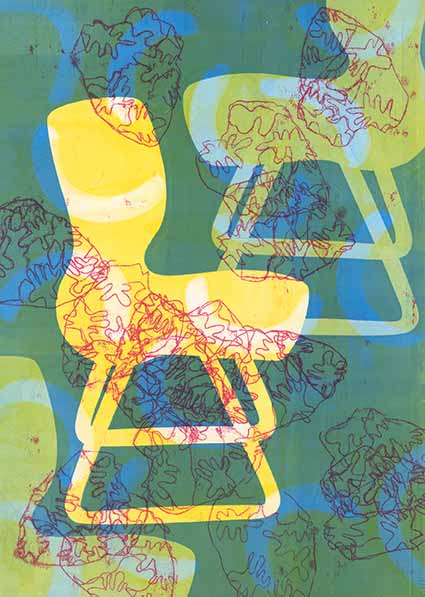
Collections of iconic design also have a big influence on Bethan’s work. Naturally, being a textile designer, she is drawn to greats such as Gunta Stölzl and Zandra Rhodes. Her work also takes her outside the fashion and textiles realm, drawing inspiration from furniture designer Eileen Gray and Memphis Group member, Ettore Sottsass: ‘I love anything by Sottsass, the way that he incorporates pattern and colour has definitely inspired my work.’
Bethan’s background in graphic design has also informed her approach to developing designs for textiles. Through abstracting or simplifying the original object, Bethan creates marks and outlines which are then layered with colour and pattern. However, she confesses that drawing didn’t always come naturally to her: ‘Drawing was often something I had previously struggled with, and it wasn’t until my art foundation that I was exposed to the idea of using it as an exercise and a way of generating ideas.’
Through working with artists and designers like Bethan, we can show children and young people how to come up with their own original ideas, how to make use of historical and contemporary design objects, and how to confidently make decisions to disrupt or challenge those ideas with new ones.
Students meeting and working with young emerging designers and artists is an invaluable way to learn and bring museum collections to life. Bethan’s approach in the session she teaches on the V&A Schools Programme mirrors the techniques she uses in her own practice. Working in collaboration with the Museum’s Schools Team she has translated her way of designing into drawing activities to support sketchbook work and ideas generation. They promote new ways of looking, aiming to free up the drawing process and make the blank white page less daunting.
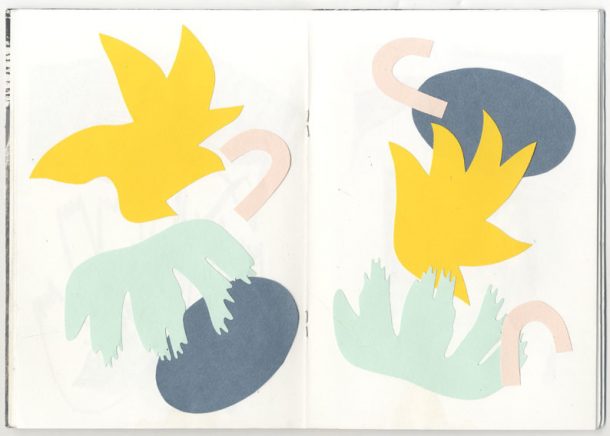
So, for example, a series of simple warm-up techniques exploring texture, weight and line using a range of pencil types, is followed by an activity to ‘zoom-in’ on the detail or pattern in a range of objects in the colourful 20th century gallery. Then, from the micro to the macro, students focus just on the outline of one object and use this to create an abstract pattern – scaling their shape up or down. The forms from the pattern are then translated into bright and bold collage, combining cutouts and drawing to develop layers of texture and depth. The emphasis throughout the session seeks to guide students away from the fear of ‘not getting it right’ and towards a bold, confident and unique approach.
Returning to Paxton, Buckminster Fuller and Arup and their enviable sketching abilities, we should keep their skill and drawing fluency in mind when we think of the future generation of artists, designers, architects and engineers. Through time devoted to drawing and learning from objects and other artists, it is the hope that our young people will be expressing their kernels of ideas on paper with the same confidence, creativity and originality.
Research and Record is a free session for Secondary school students. To find out more and book visit vam.ac.uk/secondary
#schools #secondary #drawing
